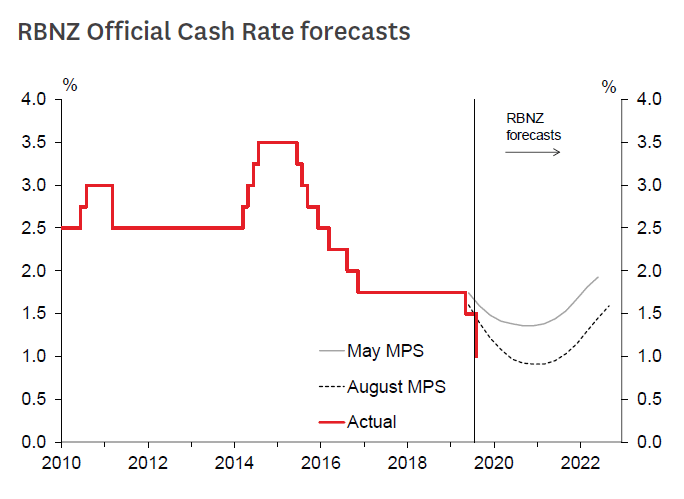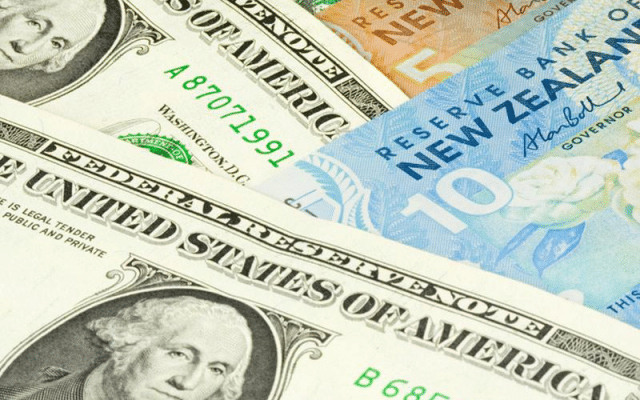The NZD/USD currency pair is one of the only three commodity pairings on the foreign exchange market. The primary commodity that is related to NZD/USD is agricultural, especially dairy products. In this article, we take a look at some of the main factors that affect the value of the NZ dollar and the exchange rate of the NZD/USD pair in turn.
What is NZD/USD?
New Zealand Dollar (NZD) is the national currency of New Zealand while the US dollar (USD) is of the United States. The NZD/USD pair, also known amongst traders as the ‘kiwi,’ is a commodity pair. That means that the pair’s exchange rate has a strong correlation to the market value of a commodity. Generally, the said commodity is local to one or both the country’s economies.
New Zealand is the global dairy exporter and products such as butter, cheese, and milk powder make up a fifth of its total exports. To the US, New Zealand is the 14th largest supplier of agricultural goods.
The NZD/USD pair is the ideal pair for traders to implement a carry trade. In such cases, investors and traders sell a currency and invest their capital into a currency with a higher yield. Profits through carry trades are realized because of exchange rate fluctuations and differences in interest rates.
New Zealand Economy
Apart from agriculture, which accounts for 4% of the country’s GDP, many other industries such as horticulture, mining, forestry, and fishing play a crucial role in New Zealand’s economy, especially for employment and export. Tourism is another important source of foreign-exchange revenue generation.
New Zealand’s central bank, the Reserve Bank of New Zealand (RBNZ) maintains price stability by keeping inflation between 1% and 3%. In order to implement this monetary policy, it sets an Official Cash Rate (OCR), which affects all other interest rates.
The rising domestic inflation can lead to a falling NZD/USD exchange rate and hurt the consumer price index. Of late, the domestic annual inflation spiked by 3.4%, which is the highest inflation rate since 2011. This led the RBNZ to intervene and set the lowest interest rates on record in order to support the economy.

Ultimately, it is the difference between interest rates set by the RBNZ and the Fed that influence the exchange rates that traders capitalize on to execute their carry trades.
What moves NZD/USD?
Let us take a look at some of the most important factors that move the NZD/USD currency pair. Every trader that is interested in understanding and trading the NZD/USD currency pair must understand the following factors.
1. Commodity
Being one of the three commodity pairs, the NZD/USD exchange rate is affected by the price fluctuations in dairy products. Since more than two-thirds of the exports are agricultural in nature, this is one factor that traders should keep a lookout on. In terms of whole milk powder, New Zealand is the world’s biggest exporter.
It is one of the very few countries whose agricultural sector is completely exposed to the international economy, which means there are no tariffs or subsidies. As such, if milk prices rise, the New Zealand economy will improve and traders can price up the currency.
As tourism is another integral element of the New Zealand economy, whenever visits to New Zealand become cheap, the economy will improve, leading to an appreciation of the NZD against the USD.
2. Correlation and Relative performances
The NZD/USD currency pair is also influenced by the value of the NZD or the USD in relation to other currencies. This connection or correlation between two currencies is crucial for achieving maximum returns after risk adjustments. Correlations between currencies range between -1 and +1. The correlation that is nearer the upper limit means that there is a perfect consonance between the two currencies.
In the two tables below, the currency pairs that have strong positive and negative correlations to the NZD/USD pair are highlighted.
| Top 5 positive correlations | |
| GBP/USD | 0.94 |
| EUR/USD | 0.91 |
| AUD/USD | 0.91 |
| AUD/CAD | 0.84 |
| EUR/CHF | 0.72 |
| Top 5 negative correlations | |
| USD/CHF | -0.92 |
| USD/DKK | -0.91 |
| USD/JPY | -0.86 |
| USD/CAD | -0.86 |
| USD/SGD | -0.86 |
When compared to each other, the interest rate differentials between the Federal Reserve (Fed) and the Reserve Bank of New Zealand also affect each other. Whenever the US dollar is made stronger by Fed interventions in open market activities, the value of the NZD/USD pair declines. This is because the value of the USD increases compared to the NZD.
Since the NZD is considered a high yielding currency, it can be used for carry trading. This means that investors will purchase the NZD by funding it with a low-yielding currency such as the Swiss franc or the Japanese Yen (JPY). The primary objective is to profit from the interest rate differentials that can get substantive when considering account leverage.
However, these trades are generally implemented by risk-seeking investors and bounce out when they turn risk-averse.
3. Economic indicators
A few economic indicators should also be kept in mind when trading NZD/USD pair as they tend to change the value of the currencies. Some of these are as follows:
- GDP
- Interest rates
- Consumer Price Index
- Unemployment rates
- Balance of Trade
If the GDP rises, the value of the New Zealand dollar will automatically raise compared to that of the US. This will make the New Zealand dollar rise in demand, leading to an appreciation. The consumer price index (CPI) is one factor that indirectly affects the exchange rate. An increasing CPI will lead to inflation and problems of affordability that may lead to a fall in the value of the NZD.

To tackle a shrinking economy, the RBNZ sets the interest rates in a bid to tackle inflation while encouraging growth. A higher interest rate differential makes the NZD/USD currency pair an attractive prospect for the trader. Balance of trade is important too since a trade deficit will highlight the loss in value for the NZD while a surplus will indicate a rise.
The Conclusion
The NZD/USD currency pair is a high-yielding pair, relatively speaking, that is utilized by traders and investors for carry trading. As a commodity pair, it is also dependent on the international prices of agricultural products.
The NZD/USD pair is correlated with many other major forex currency pairs, especially to the Australian Dollar (AUD/USD), its neighbor. There are various factors that lead to a change in the NZD/USD exchange rate that traders must be aware of, including the monetary policies of the Fed and the RBNZ as well as the economic indicators of New Zealand’s economy.




